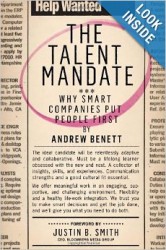Next week I’ll be attending the SHRM Talent Management Conference in Nashville. It’s an event focusing on recruiting and talent, and I’m excited about attending and sharing some of the sessions I’ll be viewing.
If you’re going to be there and want to connect, hit me up via email and we can try to make it work.
As a preview, here are the sessions I’m planning to check out during the event.
Big Data: Your Best Bet In The War For Talent
Why: As our organization has grown it has become harder to source from some of the same pools that we’ve used repeatedly over the years. I’m hoping to learn more about using data to help find the next person I hire.
Quality of Attrition: Management’s Favorite Human Capital Metric
Why: We have a long-standing discussion at work about the difference between retention and turnover. For our purposes, retention is preventable, turnover is not. I’m hoping to learn more about attrition, what the market averages are, and how we can leverage that for better organizational metrics.
Beyond Performance Reviews: Influencing Performance Improvement
Why: Thanks to my buddy Chris Ponder, I’ve been getting more interested in the field of performance improvement lately. I’d like to look at ways we can take our paper (shudder) performance reviews to another level with more impact to the business.
Effectively Managing a Remote Workforce
Why: We have more people outside our local office and we’re adding new work sites regularly. It becomes difficult to make sure everyone feels included and engaged when they are not physically in the same workplace. I’m looking for ideas on how managers can lead those people as well as how to make sure we’re taking care of the remote staff adequately.
Strategic Talent Acquisition: The “Talent Advisor†Approach
Basically, how valuable would your leadership say your recruiting function is? Do they think it enhances the overall business by finding the right people at the right time? I think we do this pretty well, but I am always looking for ways to improve our service delivery on the recruiting side.
Well? Anything in there look interesting to you? What would you like me to share about?
